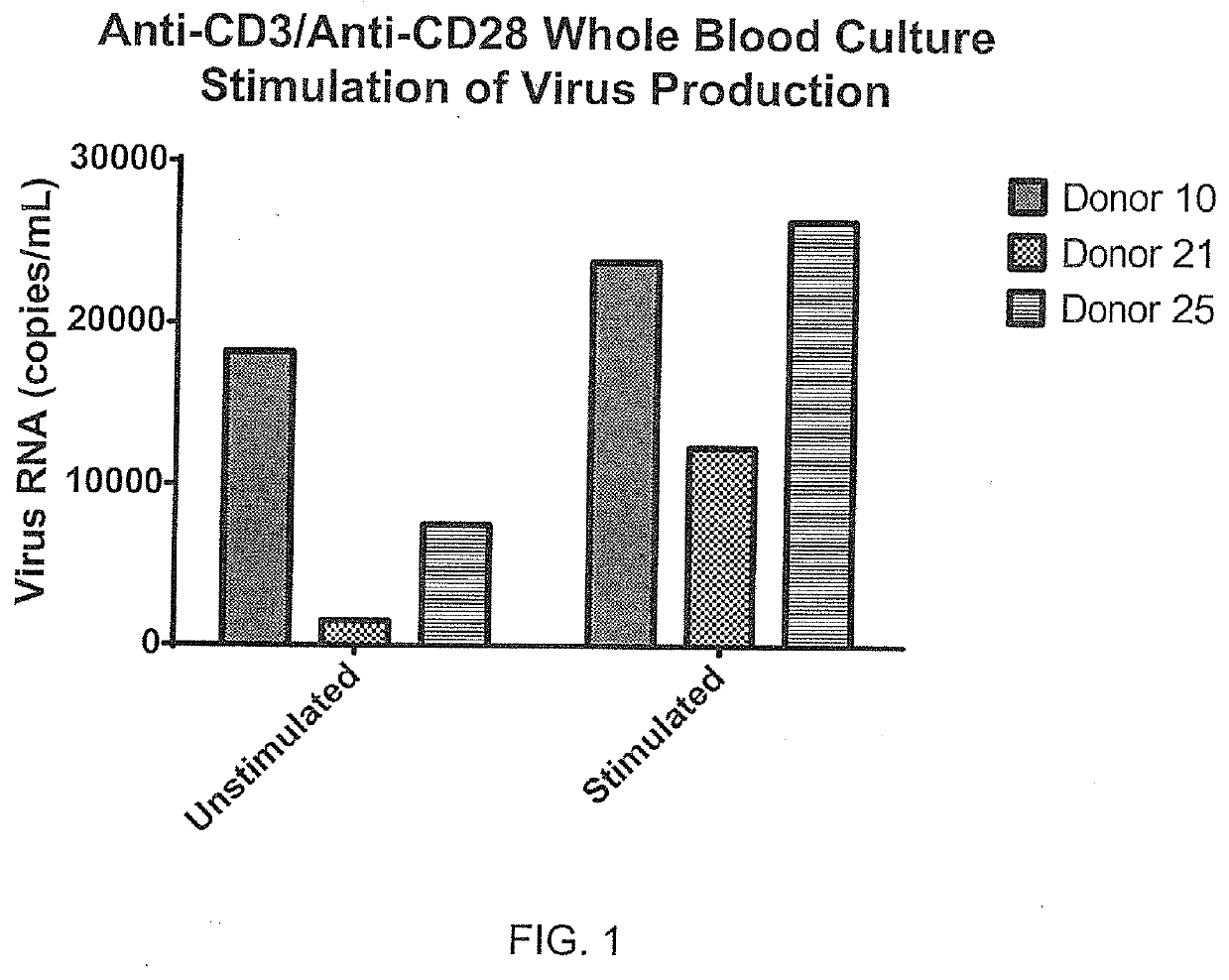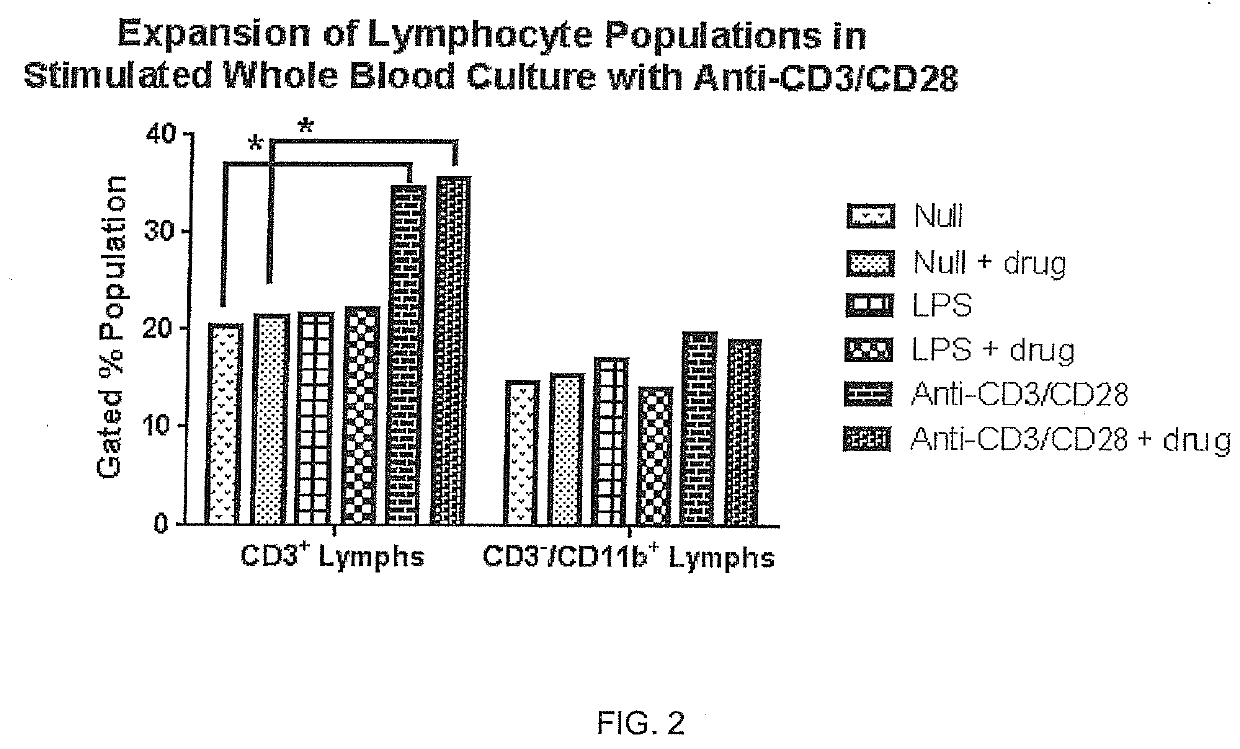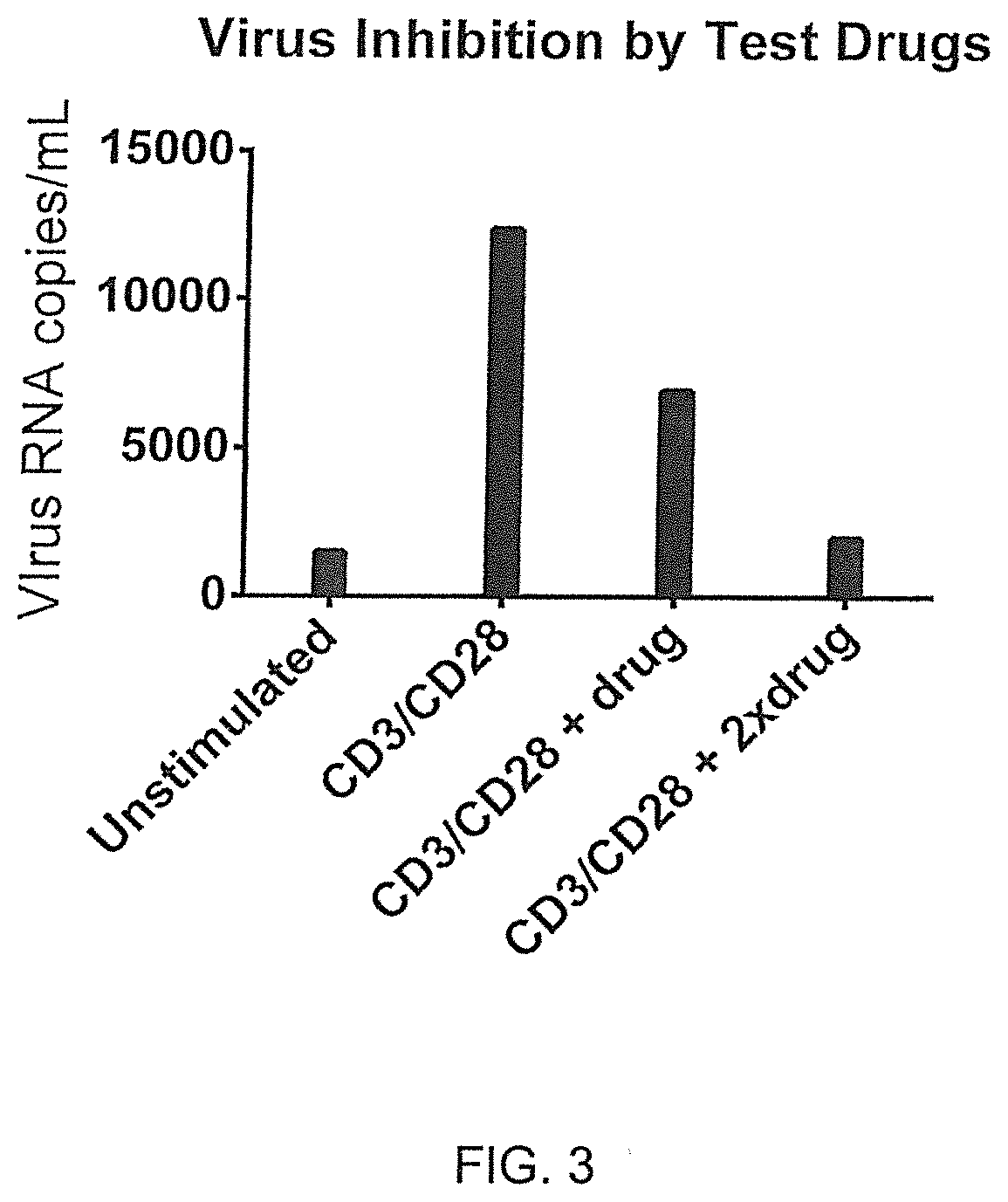Utilities of stimulated whole blood culture systems
a whole blood collection and culture system technology, applied in the field of use of stimulated whole blood collection devices, can solve the problems of disturbing the natural state of recovered cells, difficult to investigate other latent hiv reservoirs, complex dynamics of latent reservoirs,
- Summary
- Abstract
- Description
- Claims
- Application Information
AI Technical Summary
Benefits of technology
Problems solved by technology
Method used
Image
Examples
example 1
Anti-CD3 / Anti-CD28 Antibodies Increase Virus Production as Compared with Matched Unstimulated Cells
[0080]Blood was collected into sequential preloaded (anticoagulant and stimulant in media) tubes and incubated 48 hours. Stimulants such as anti-CD3 / anti-CD28 antibodies were matched to unstimulated tubes using whole blood culture at 37° C. in a tissue culture incubator with gases off. Samples were then centrifuged (140 g, 5 min) and supernatants were collected in duplicate vials (˜0.8 mL each) and frozen (−80° C.). RNA was measured by RT-qPCR using the Abbott RealTime RNA assay. Recoveries were analyzed across matched donor sets (stimulated vs. unstimulated), reflecting relative virus amplification using the stimulant as shown in FIG. 1. Expansion of T-cell populations (identified by anti-CD3 antibodies) as illustrated in FIG. 2 are possible over this time period.
example 2
Antiviral Drug Effects Evidenced by Reduced Virus Production in Stimulated Whole Blood Cultures
[0081]Antiviral activities can be measured and compared using candidate therapeutics, drugs and / or stimulants. Blood was collected into sequential preloaded (anticoagulant and stimulant in media) tubes and incubated 48 hours. Anti-CD3 / anti-CD28 antibodies stimulated virus production as compared with matched unstimulated tubes using whole blood culture at 37° C. in a tissue culture incubator with gases off. Samples were then centrifuged (140 g, 5 min) and supernatants were collected in duplicate vials (˜0.8 mL each) and frozen (−80° C.). RNA was measured by RT-qPCR using the Abbott RealTime RNA assay. Relative virus inhibition correlates with increasing drug concentration as shown in FIG. 3.
example 3
Soluble Factor Responses Correlate with Virus Production Rates (Viremia)
[0082]HIV-infected and uninfected blood was collected into sequential preloaded (anticoagulant and stimulant and / or drug in media) tubes and incubated 48 hours. Using lipopolysaccharide, differences in soluble factors from cellular responses correlate with virus production (viremia) for select factors. Whole blood was cultured at 37° C. in a tissue culture incubator with gases off. Samples were then centrifuged (140 g, 5 min) and supernatants were collected in duplicate vials (˜0.8 mL each) and frozen (−80° C.). Supernatants were analyzed using Luminex fluorescently-labeled multiplex microbeads for 47 soluble factors. Correlations between viremia and immune cell stimulant responses (FIG. 4); immune cell stimulant responses with drug (FIG. 5); or drug-induced responses (FIG. 5) are illustrated.
PUM
 Login to View More
Login to View More Abstract
Description
Claims
Application Information
 Login to View More
Login to View More - R&D
- Intellectual Property
- Life Sciences
- Materials
- Tech Scout
- Unparalleled Data Quality
- Higher Quality Content
- 60% Fewer Hallucinations
Browse by: Latest US Patents, China's latest patents, Technical Efficacy Thesaurus, Application Domain, Technology Topic, Popular Technical Reports.
© 2025 PatSnap. All rights reserved.Legal|Privacy policy|Modern Slavery Act Transparency Statement|Sitemap|About US| Contact US: help@patsnap.com



